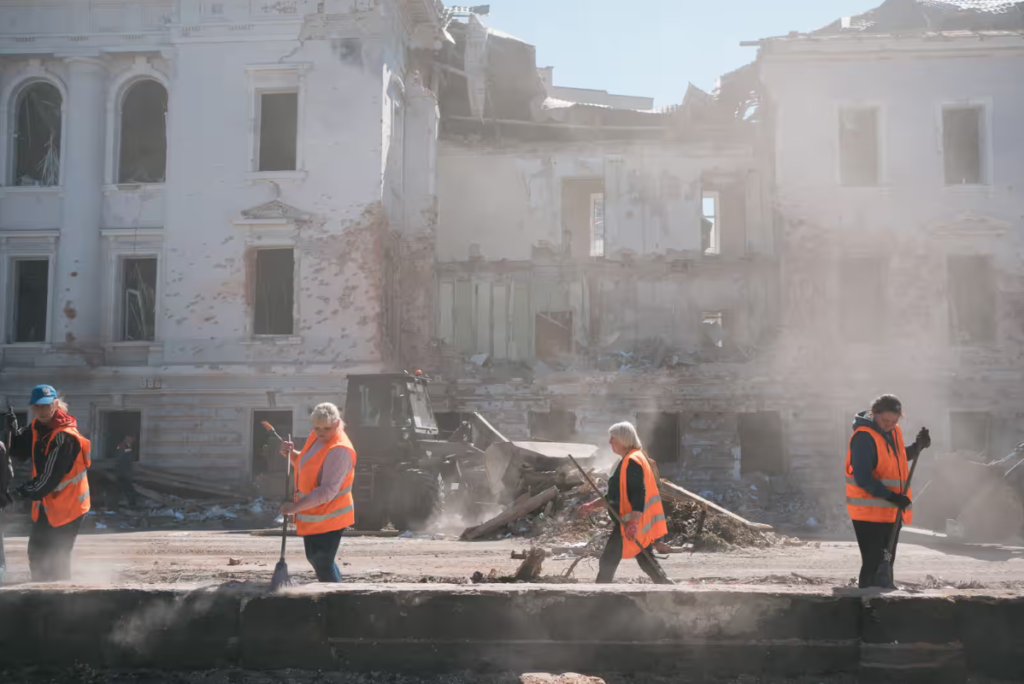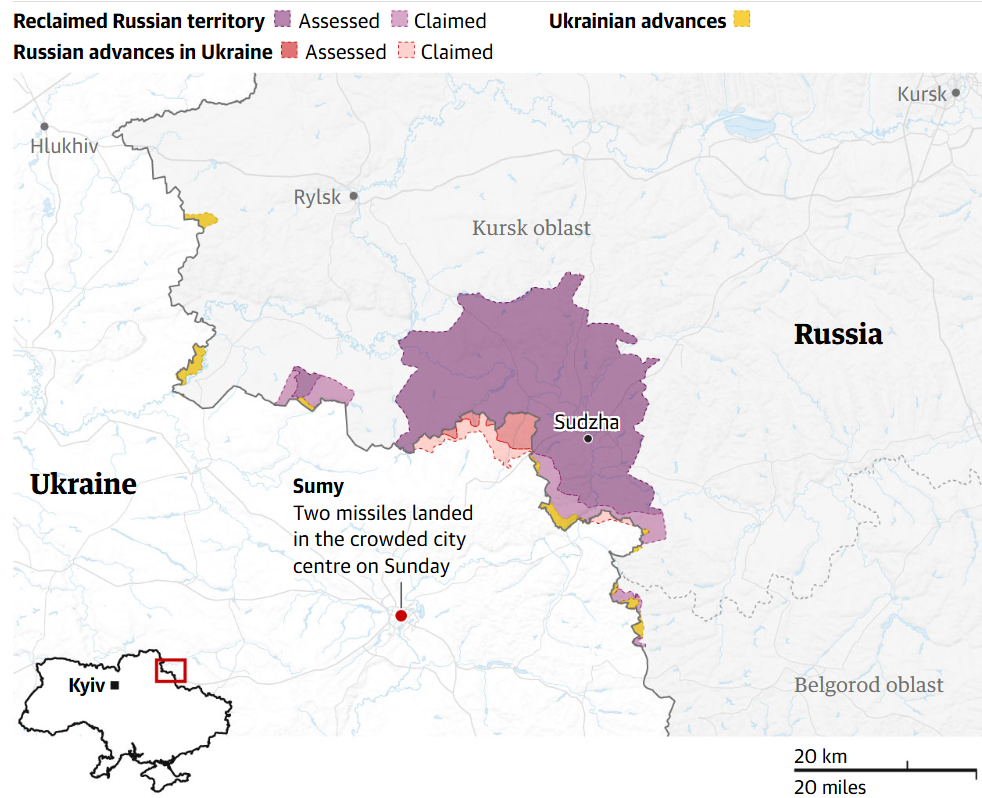NATO Chief Rushes to Ukraine After Russian Missile Strike Kills Civilians in Sumy, as global pressure intensifies and U.S. allies rally behind Ukraine following one of the deadliest attacks in recent months.
1. What Happened in Sumy? Inside the Deadly Missile Attack
On April 14, 2025, a Russian missile strike hit the Ukrainian city of Sumy, killing 35 civilians and injuring over 100 during Palm Sunday gatherings. The attack targeted a public square, a cultural conference center, and a nearby university — all civilian zones.
Ukrainian emergency services confirmed children and teachers were among the victims. International leaders condemned the strike as a war crime and blatant violation of humanitarian law.

2. Why Did the NATO Chief Visit Ukraine Immediately?
Just hours after the strike, NATO Secretary-General Mark Rutte made an urgent, unannounced visit to Odesa, Ukraine. He met with President Zelenskyy, toured hospitals treating the wounded, and gave a clear message: “Ukraine’s rightful place is in NATO.”
His visit was a direct response to rising global concerns and an effort to show solidarity, especially to U.S. allies who support increasing NATO’s engagement in the region.
3. NATO’s Current and Future Support for Ukraine
Rutte’s visit came with concrete promises. NATO members pledged over €20 billion (approx. $21.4 billion) in early 2025 for:
- Air defense systems
- Ammunition and drones
- Strategic communications and logistics
- Cybersecurity upgrades
This support is not only financial—it’s a defensive and political commitment.
NATO Military & Financial Aid to Ukraine (2023–2025)
| Year | Aid Volume | Major Contributions | Key Focus Areas |
|---|---|---|---|
| 2023 | $12.7B | USA, UK, Germany, France | Ammunition, Tanks, Training |
| 2024 | $17.2B | USA, Poland, Baltic States | Drones, Intelligence, Missiles |
| 2025 (Q1) | $21.4B | USA, NATO Combined | Air Defense, Cyber, Logistics |
4. Global Reactions: What the U.S. and Allies Are Saying
The United States, Germany, France, and other NATO members issued harsh rebukes following the Sumy attack. President Biden labeled the strike a “crime against humanity.” The United Nations called for an emergency Security Council meeting.
Ceasefire negotiations led by former U.S. President Donald Trump are ongoing, but experts suggest Russia’s aggression is increasing in parallel, raising doubts over future peace talks.
5. Ukraine’s NATO Membership: Is Accession Now Accelerating?
The Sumy strike has reignited discussions on fast-tracking Ukraine’s NATO membership. While full accession may still require political steps, the rhetoric has shifted significantly:
- NATO leaders now openly say Ukraine’s path is “irreversible.”
- Public support in both Europe and the U.S. for Ukrainian membership is rising.
- Ukraine is being gradually integrated into NATO’s strategic defense planning.
This momentum could push the alliance toward its most historic expansion since the Cold War.
Conclusion: Why the U.S. Must Keep Watching Ukraine
The Sumy attack and the NATO Chief’s rapid response highlight how global stability remains under threat. For USA readers, this matters because:
- NATO is backed heavily by U.S. funding and military strength.
- Escalation impacts global markets, energy costs, and military budgets.
- U.S. elections could shift policy on Ukraine — and change NATO’s approach entirely.
Staying informed on these developments is not just about global awareness — it’s about understanding how they affect American lives, policy, and safety.
[USnewsSphere.com / tg.]





